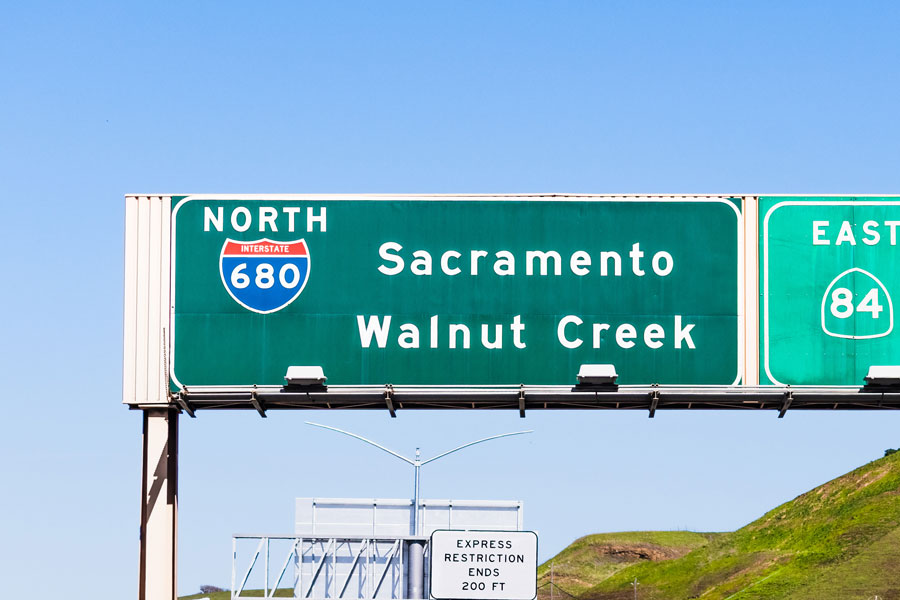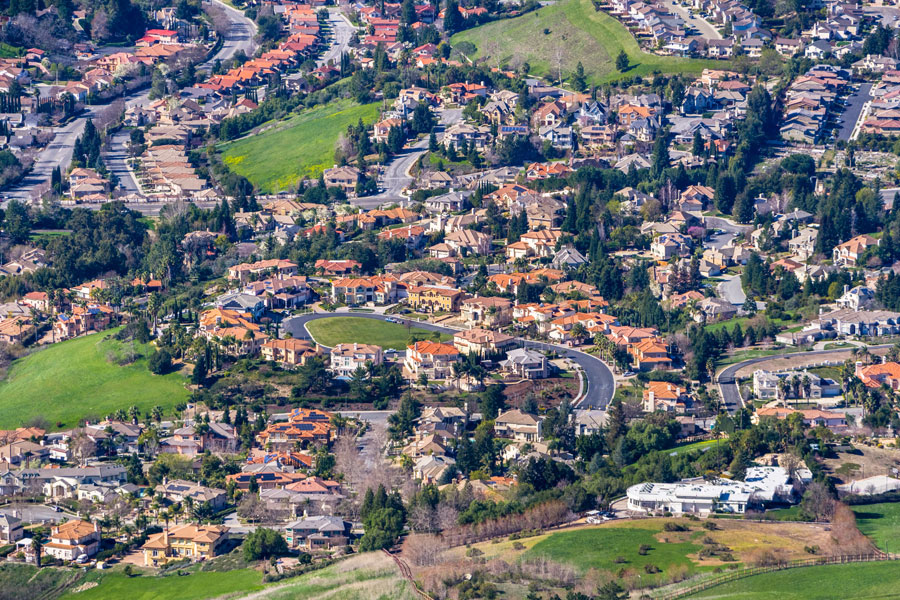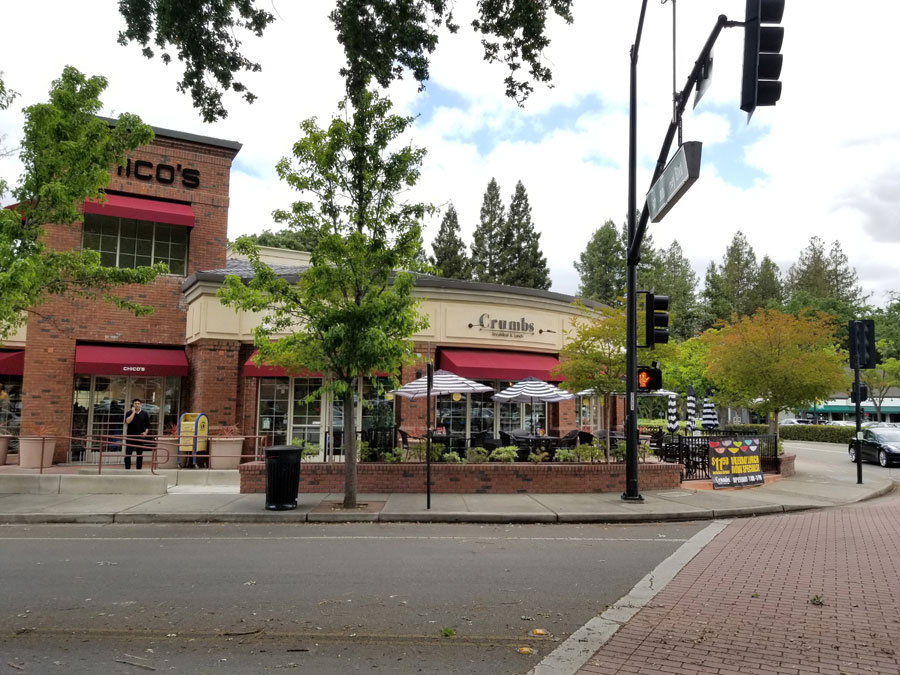Nothing comes close to living in the East Bay – those who live here enjoy a high quality of life with beautiful weather, gorgeous scenery, and world-class shopping and dining within proximity to San Francisco. Here’s what you can expect when relocating to the area.
Table of Contents
- Welcome to the 680 East Bay Area
- The 680 East Bay Area: A region within a region
- History: Milestones in the development of the 680 East Bay Area
- The construction of the local segment of the I-680
- What the 680 Highway East Bay Area is known for
- More information on towns and cities along the 680 East Bay Area
Welcome to the 680 East Bay Area
When people talk about the East Bay, they’re referring to the eastern portion of the Bay Area. Other subregions that make up the Bay Area include Marin, Peninsula, and South Bay. There are over 2.8 million residents living in the East Bay based on estimates from the East Bay Economic Development Alliance (EDA), making it the most populous subregion in the Bay Area.
Located across the Bay Bridge from the City of San Francisco, the East Bay comprises Alameda and Contra Costa counties. It is known for prestigious schools like University of California (UC) Berkeley and California State (Cal State) University – East Bay as well as top companies like Bayer, Chevron, Pixar, and Tesla.
The East Bay is made up of towns and cities along the eastern edge of the Pablo Bay and San Francisco Bay and extends about 40 miles inland. Concord lies at the northernmost tip while Fremont is situated at the south. Oakland, a major transportation hub, is the largest and most prominent city in the East Bay.
The East Bay is further divided into two distinct regions with the East Bay Hills as a line of demarcation. The cities of Berkeley, Fremont, Hayward, Leandro, Oakland, San Leandro, and Union City are located along the San Francisco Bay on the western face of the hills. This area is known for pleasant weather and water views.
The cities of Livermore, Pleasanton, and Walnut Creek can be found on the eastern side of the hills. Known for warm summers and foggy winters, this area saw a real estate boom in the 1970s as a bedroom community for workers in the Peninsula, South Bay, and San Francisco. Today, it is home to large corporate offices.
-
The Tri-City Area comprises Fremont, Newark, and Union City with several mid-size cities offering single-family homes, new construction, major retailers, and proximity to San Jose and the South Bay.
-
The Tri-Valley Area is made up of Danville, Dublin, Livermore, Pleasanton, and San Ramon with smaller cities located east of the hills. This area has a suburban environment with freeway and Bay Area Rapid Transit (BART) access.
When it comes to lifestyle, the East Bay is known for being more laid-back and less trend-conscious than other subregions in the Bay Area. Many buyers find that living in the East Bay is a welcome change of pace from the fast-paced and hyper-connected environment of Silicon Valley.
The 680 East Bay Area: A region within a region
The 680 East Bay Area covers a large swath of the East Bay region, including the following towns and cities:
- Alamo
- Concord
- Danville
- Dublin
- Fremont
- Lafayette
- Martinez
- Oakland
- Orinda
- Pleasant Hill
- Pleasanton
- San Ramon
- Walnut Creek
The area gets its name from Interstate 680, a busy freeway that stretches for over 70 miles through the East Bay. It serves coastal areas like Oakland and Richmond as well as cities further inland like Concord and Pleasanton.
This Auxiliary Interstate Highway runs north-south and was previously part of California State Route (SR) 21. It has been expanded in several locations since its construction in the 1920s with junctions in Dublin (I-580) and Walnut Creek (SR 24).
I-680 starts at a junction with I-280 and US Route before extending to the northeast and north-northwest through the northeastern portion of San Jose. It winds through the scenic hills and valleys of the California Coast Ranges and along the Calaveras Fault in San Ramon Valley.
The towns and cities of 680 East Bay developed around this freeway, making it highly accessible from other parts of the Bay Area. In addition to I-680, the area is also accessible via SR24 and public transportation options like BART and the County Connection bus system.
History: Milestones in the development of the 680 East Bay Area

The 680 East Bay Area traces its history to pre-colonial times, when it was home to the Ohlone people, hunter-gatherers with a robust trade system and social structure. Spanish explorers arrived in the late 18th century and established missions and settlements throughout the Bay Area. They were followed by Northeasterners and European settlers, who arrived in the 19th century in search of fresh opportunities.
The 680 East Bay Area emerged as an agricultural hub from the late 1800s to the early 1900s. The area became known for farms and ranches that produced wheat, almonds, and grapes. It also had a prosperous lumber industry with sawmills gathering fir and redwood trees from the nearby hills.
But by the mid-20th century, the 680 East Bay Area had increasingly shifted towards an urbanized economy with the manufacturing, service, and tech industries. The construction of major roads like Interstate 680 further contributed to the economy’s growth, making it easier for workers and business owners to drive to and from the area.
The East Bay witnessed significant growth following World War II with American families looking for more affordable homes. The population grew from 2,120 in 1940 to 41,095 in 1975 with a real estate boom on both sides of the I-680.
The construction of the local segment of the I-680
Before the expansion of the I-680, residents drove on rural roads that meandered along the valley and led to the downtown areas of Alamo, Danville, and San Ramon, where they shopped for supplies, fetched their mail, and attended dances and other social events. State Highway 21 served as a north-south arterial from San Jose to Martinez.
By 1945, the old two-lane highway that went through downtown Alamo and Danville had become congested with bumper-to-bumper traffic. Fortunately, the Federal Highway Act of 1956 authorized the building of new highways, including an inland freeway that could ease traffic on Danville Highway.
U.S. Representative and Danville native John Baldwin served on the Congressional Public Works Committee and chose the final freeway alignment with Assemblyman Don Doyle. Guy F. Atkinson Co. built the local segment of the I-680, which extended for 6.75 miles from Walnut Creek to Sycamore Valley Road. The segment was completed in 1964 and was celebrated with a ribbon cutting and a parade of antique cars and bagpipe players.
Today, the 680 East Bay Area is a vibrant region that continues to grow and evolve. Although much of its history stems from the agriculture and lumber industries, it has since transformed into a modern and desirable residential area that attracts affluent homebuyers from all over Northern California.
What the 680 Highway East Bay Area is known for
The 680 East Bay Area is characterized by well-thought-out urban and suburban developments that accommodate a diverse population and leading companies in tech, retail, healthcare, and services supporting the local economy. Its reputation as a dynamic and rapidly growing region stems from its highly coveted housing market, first-rate amenities, and high quality of life. The area’s companies and research firms attract top talent from all over the United States.
680 East Bay residents also have access to retail and lifestyle destinations like Sunvalley Shopping Center in Concord and Stoneridge Shopping Center in Pleasanton. Other major shopping centers in the area include:
- Bayfair Center (San Leandro)
- New Park Mall (Newark)
- Southland Mall (Hayward)
When it comes to outdoor recreation, the East Bay Regional Park District operates 73 parks encompassing 125,496 acres across the East Bay, including 1,330 miles of scenic trails and 55 miles of pristine shoreline.
The 680 Bay Area’s landscape is shaped by open spaces, rolling hills, and several trails, parks, and recreational areas, including the Iron Horse Regional Trail, Las Trampas Regional Wilderness, and Mount Diablo State Park.
Lastly, the East Bay has a strong sports culture. Residents support many professional, collegiate, and youth teams in basketball, baseball, and football. Sports fans living in the East Bay have access to a wide range of sports bars, stadiums, gymnasiums, and sports and fitness facilities scattered throughout the area.
More information on towns and cities along the 680 East Bay Area
In general, the 680 Bay Area housing market offers larger homes compared to other subregions in the East Bay. Many properties have expansive outdoor living spaces with yards, patios, and swimming pools. Some cities’ proximity to San Francisco makes it ideal for entrepreneurs and professionals who want to come home to a quieter and more relaxed environment. The area’s reputable public schools also appeal to families with children or buyers planning to start families.
Alameda, Berkeley, and Oakland offer a pedestrian-friendly, urban-suburban environment within proximity to San Francisco. These cities offer world-class shopping, dining, and entertainment options along with festivals that bring art, culture, and live music to the fore.
However, there are other cities in the 680 Bay Area that are also worth considering:

Fremont
Fremont is a city in the southern portion of the 680 East Bay Area. Located in Alameda County, it is bordered to the north by Contra Costa County and to the south by Santa Clara County. Founded in 1956, it gets its name from explorer John C. Frémont. It is home to 227,514 residents as of 2021.
-
Real estate – Buyers can choose from an excellent selection of condos, townhomes, and single-family homes. The housing market also offers custom-built and new construction homes by leading builders. Popular architectural styles include Ranch, Contemporary, Mediterranean, and Mid-Century Modern.
-
Economy – Fremont is the epicenter of Silicon Valley with more than 900 businesses and millions of square feet of commercial, office, and industrial space. Its largest sectors include tech, advanced manufacturing, and life sciences.
-
Schools – The Fremont Unified School District (FUSD) serves over 33,000 students across 41 schools. FUSD has received multiple California Distinguished Schools and California Gold Ribbon Schools over the years.
-
Attractions – Highlights include Ardenwood Historic Farm, Coyote Hills Regional Park, and nearby Don Edwards San Francisco Bay National Wildlife Refuge.
Dublin
Dublin is a city in the eastern edge of the 680 East Bay Area. Its population is 71,674 as of 2021. Located near Alameda County’s border with Contra Costa County, it lies approximately 23 miles north of San Jose and 35 miles east of San Francisco. It is also strategically located at the intersection of I-680 and I-580. In addition, residents have access to a BART station.
-
Real estate – The housing market offers an array of single-family homes, townhomes, and condos with a balanced mix of older and new construction homes. It also offers a wealth of architectural styles, including Modern, Mid-Century Modern, Contemporary, Colonial, Ranch, and Mediterranean.
-
Economy – is an attractive option for entrepreneurs due to its highly educated workforce. It’s a business-friendly city with a low business license fee and a lack of payroll and utility user taxes.
-
Schools – Dublin Unified School District (DUSD) serves more than 12,900 from preschool to adult education. DUSD has been lauded by the Annual AP District Honor Roll multiple times and its schools have received numerous California Distinguished Schools, California Gold Ribbon, and National Blue Ribbon awards.
-
Attractions – Highlights include Dublin Heritage Park & Museums, Dublin Ranch Golf Course, Emerald Glen Park, Kolb Park, and Hacienda Crossings Shopping Center.
San Ramon
Located in the northern part of the 680 East Bay Area, San Ramon is a rapidly growing city just 24 miles east of Oakland and 35 miles northeast of San Francisco. Situated in Contra Costa County, it is home to 84,605 residents as of 2020.
-
Real estate – The housing market offers a wide selection of single-family homes, townhomes, and condos, many of which were built in the 1980s. Buyers can choose from an array of architectural styles, including Ranch, Contemporary, and Mediterranean.
-
Economy – industries include tech, healthcare, and energy. The city is home to major companies like Chevron, Bank of the West, GE Digital LLC, and San Ramon Regional Medical Center.
-
Schools – The San Ramon Valley Unified School District (SRVUSD) has received more California Distinguished Schools and National Blue Ribbon awards than any other school district in Northern California. It serves over 30,000 students across 35 schools.
-
Attractions – Highlights include City Center Bishop Ranch, Forest Home Farms Historic Park, The Golden Skate, Las Trampas Wilderness Regional Preserve, and Canyon Lake Golf Course & Brewery.
Danville
Located in the northern section of the 680 East Bay Area, this city in Contra Costa County has a population of 43,500. It lies roughly 20 miles southeast of Oakland and 35 miles northeast of San Francisco.
-
Real estate – Danville offers a large selection of single-family homes and a limited number of townhomes and apartments. Buyers can choose from older homes with beautiful architecture as well as turnkey-ready new construction homes.
-
Economy – Danville is one of the most affluent cities in the East Bay and among the wealthiest zip codes in the U.S. The city offers smaller-scale commercial developments that cater to small and independently-owned businesses in retail, dining, and personal and professional services. The economy is buoyed by sales tax revenue and low retail real estate vacancy rates.
-
Schools – The city is served by the San Ramon Valley Unified School District (SRVUSD), which operates several California Distinguished Schools.
-
Attractions – Highlights include The Blackhawk Museum, The Museum of the San Ramon Valley, Eugene O’Neill National Historic Site, and Sycamore Valley Park.

Alamo
This unincorporated community is located in the northern tip of the 680 East Bay Area. Situated in Contra Costa County, this suburb lies approximately 18 miles southeast of Oakland and 25 miles east of San Francisco. It has 13,864 residents as of 2020.
-
Real estate – is known for lavish properties with manicured gardens, swimming pools, and expansive driveways. It also offers an array of architectural styles, including Traditional, Mediterranean, and French Country.
-
Economy – industries include manufacturing, finance and insurance, real estate rental and leasing, and professional, scientific, and technical services.
-
Schools – city is served by the San Ramon Valley Unified School District (SRVUSD) with schools like Alamo Elementary School and Stone Valley Middle School.
-
Attractions – include the Castle Rock Regional Recreation Area, Diablo Foothills Regional Park, and Alamo Plaza Shopping Center.
Walnut Creek
This affluent city is located in the central part of the East Bay Area. It is situated in Contra Costa County, about 16 miles east of Oakland and 25 miles northeast of San Francisco. It has a population of 69,695 as of 2021.
-
Real estate – Creek offers single-family homes, townhomes, and condos. The most desirable properties are situated on large lots with mature landscaping and spacious driveways. Prevalent architectural styles include Contemporary, Ranch, and Mediterranean.
-
Economy – Walnut Creek serves as a shipping and commercial center for the surrounding industrial and agricultural areas that produce walnuts and fruit.
-
Schools – The Walnut Creek School District (WCSD) serves over 3,600 students in TK-8 with reputable schools and learning programs.
-
Attractions – Highlights include the Ruth Bancroft Garden & Nursery, The Gardens at Heather Farm, Lindsay Wildlife Experience, Shadelands Ranch Museum, and Bedford Gallery at Lesher Center for the Arts.
About Kimberly Ghazvini: 680 East Bay realtor
Experience living in the East Bay when you work with a Realtor. Feel free to contact me, Kimberly Ghazvini, at 650.444.3148. You can also send a message through email or contact form for more information on the 680 East Bay Area. As Golden Gate Sotheby’s International Realty’s top producer, I help clients find the perfect home in the best neighborhood.
As a licensed real estate professional since 2018, I facilitate transactions and offer advice on real estate investing. My job is to help buyers and sellers navigate the local housing market through personalized service and market expertise. Contact me today to learn more about the 680 East Bay Area.
